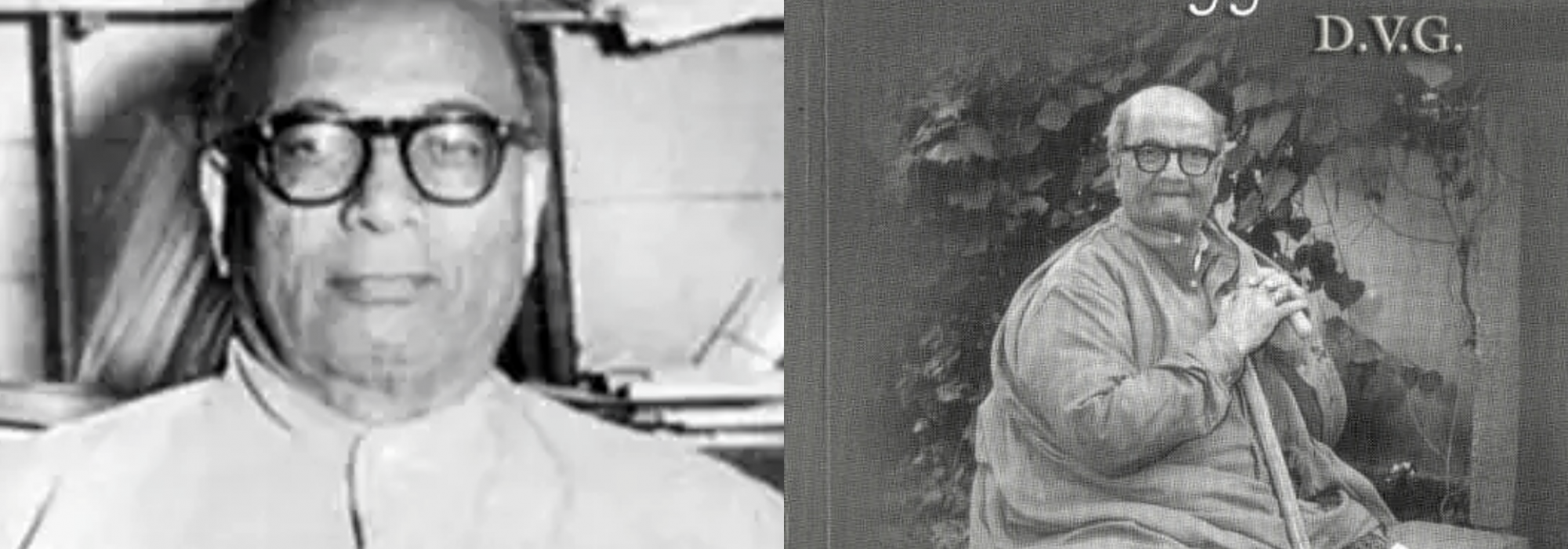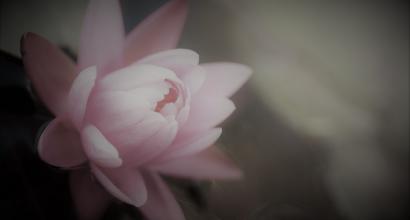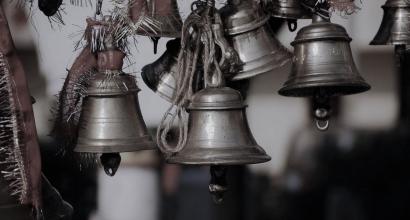Mankutimmana Kagga
Describing Mankutimmana Kagga as a phenomenon in Kannada literature is not an exaggeration given the popularity that it continues to enjoy even after five or six decades of its publication. The number of people who read it incessantly, read it repeatedly, read at least a few poems in it every day and some who have memorized several of its verses is still significant. In any language, there are only a handful of works that command this sort of pervasive public response.
What made Kagga special and unique is not merely its literary quality. The secret of its popularity lies in the fact that it is a honeyed block of years of prolonged contemplation of life and experience.
Sometime around 1950, a minister quoted the tidbit, “Annadaaturakinta chinnadaatura teekshna” (the desire for gold is more intense than that for food) – he had forgotten the rest of the poem – and claimed that this was a Vacana of the 16th century mystic and poet, Sarvajna. One can cite numerous such instances to show how deeply embedded are the verses of Kagga within the people’s consciousness. A heated debate erupted a few decades ago in a session of the Bangalore City Corporation. A member of the opposition party claimed that there was an error in the usage of a word by the Mayor. The Mayor replied: “If all you want is good and accurate language, go to Sri Gundappa. Why do you come here?” In this manner, DVG’s name would crop up in really bizarre situations.
Today, several verses of Kagga continue to dance joyfully on the tongues of cultured people.
hullagu beTTadaDi, manege malligeyaagu|
kallaagu kaShTagaLa maLeya vidhi suriye||
bella sakkareyaagu dInadurbalaringe|
ellarolagondaagu - mankutimma|| 789 ||
Be the grass at the foot of mountains, Be the jasmine to your home.
Be the rock to reckon with when fate throws torrential troubles at you.
Be the sweet savior to the needy and downtrodden.
Be one within everyone - Mankutimma.
hosa chiguru haLE bEru kUDiralu mara sogasu|
hosa yukti haLetatvadoDagUDe dharma||
RuShivaakyadoDane vij~jaanakale mELavise|
jasavu janajIvanake - maMkutimma || 522 ||
Old roots with new leaves make the tree beautiful.
New knowledge and old proverbs constitute Dharma.
If the wise words of the Rishis and new science both go hand in hand then life is good – Mankutimma
hOru dhIrateyimda, monDutanadiM beda |
vaira hagetana beda, hiri niyamavirali ||
vairAgya kAruNya mELanave dhIratana |
hOrudAttateyinda – Mankutimma ||574 ||
Fight with courage, not with obstinacy.
Cast away enmity and vengeance, be guided by the elderly.
Courage is the admixture of detachment and compassion.
Fight with a sense of magnanimity – Mankutimma
“This work is not for Pandits, eminences and the well-fed. I will be content if this will become akin to a drop of oil to the light in the homes of the most ordinary people,” remarked DVG about Kagga.
Speaking about the origins of the word Mankutimma, it was coined after considerable contemplation.
There is a picture at the beginning of Kagga: it is a painting of an anonymous person engaged in deep meditation inside a ruined cave. Because there’s no light in the cave, everything is hazy. It is only when we focus our vision intensely that we can spot the outline of a person. A brilliant person complained to DVG about the picture: “The picture has not been printed properly!” In reality, the picture appears in that fashion on purpose. In this world, the broad philosophical tenets are understood by most people in a broad sense – even to the unlearned. However, when we delve into the depths and begin to make inquiries, numerous matters continue to remain hazy – even to those well-versed in the Sastras. The purpose of that picture is to indicate that our knowledge of the world and even the possibility of acquiring this knowledge is limited. “Everything here is half: half-light, partial insight, partial knowledge.” (68)
DVG’s MaruLa Muniyana Kagga saw light of the day four decades (1984) after Mankutimmana Kagga was published (1943).
MaruLa Muniyanu nAnu Mankutimmana tamma |
surivenennedeyachIladella puruLugaLa ||
sari nODi koDuva sajjanarihare lOkadali |
sharaNaveppenavarimge – maruLa muniya || 7 ||
I am Mankutimma’s younger brother, Marula Muniya.
I will pour forth all the items in the bag of my heart.
Are there any noble souls in the world to recompense their measure?
I surrender to them – Marula Muniya.
Marula Muniyana Kagga is equally bountiful and lush as Mankutimmana Kagga. This work too, contains more than 800 verses. The emotions and philosophy that unfolded in the first Kagga have also been recast and reiterated here. However, it is not a shortcoming if elements of joy and wisdom are repeated.
DVG had written down these verses on small scraps of paper at random whenever inspiration struck him. He had thought of refining and editing them at some point in the future. However, it didn’t quite transpire in that fashion. About seven or eight years after DVG departed from the mortal world, DVG’s close associate, Vidwan N. Ranganatha Sharma edited and refined this heap of poems and got them ready for publication.
In reality, a significant portion of these verses were born in the early years of the 1970s decade. DVG’s original plan was to bring them out as the second volume of the first Kagga. However, this scheme was abandoned because the existing form of the original Kagga was deeply embedded in the minds of people and any modifications or additions wouldn’t be that appealing to them. And so, after it was decided to bring it out as an independent volume, he thought of several names such as Marmajna, Hucchu Muniya, etc and finally retained Marula Muniya.
The inconvenience of altering the original fabric of Kagga had become clear long ago. In a short span after the first edition of Mankutimmana Kagga had run out of print, DVG made a few minor corrections in its reprint. A connoisseur who observed this – Principal Sub Judge, Sri C.B. Srinivasa Rao, personally visited DVG and took him to task:
CBSR: “Why are you giving us such troubles?”
DVG: “Why? What have I done?”
CBSR: “We learned your original verses by heart with great difficulty! Now we have to again start learning all of them from the scratch!”
One can count on the fingers of one’s hand the number of works of the Navodaya (literally, “New Dawn”) literary period that have retained this level of renown even five or six decades after they were published. When V.K. Gokak described Kagga as one of the summits of literary excellence in Kannada in the last century, he was not exaggerating.
Of the innumerable services that DVG has rendered to the public, Kagga deserves a special mention. Several verses of Kagga have attained the status of a bosom buddy in the lives of hundreds of people. Every single verse of Kagga bolsters and strengthens our faith in the innate value in life itself.
ollenenediru bALan, olavadEnennadiru |
ullAsakeDemAdu ninninAdanitu||
nillu kecchedeyiMdalanyAgaLanaLise|
ellakam siddhaniru – Mankutimma ||258||
Don’t reject life, don’t ask what is love.
Make way for enthusiasm and joy, that is your music.
Stand with a courageous heart while erasing injustices.
Be ready for everything – Mankutimma.
***
In no situation did DVG falter or hesitate to uphold the literary values that he had conviction in. The Kendra (Central) Sahitya Akademi had embarked on a project to translate Masti Venkatesha Iyengar’s award-winning novel, Chennabasavanayaka to multiple languages. However, they dropped it owing to opposition from some quarters. The opposition was entirely motivated by casteist considerations. DVG immediately voiced his protest to this opposition in a highly public manner.
“Poetry is not a feat of acrobatics; nor is it the tricks of playing cards. It is the lamp that shows an elevated path of life. Not just that. In itself, it is also a part of our elevated life. Or it is the best part of our life. This principle is indeed wise.”
DVG had deep faith in this dictum. DVG always used this yardstick for judging values.
To be continued











































